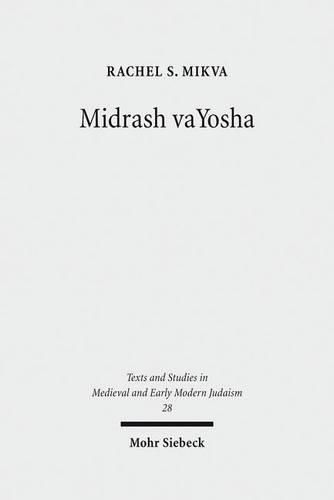Readings Newsletter
Become a Readings Member to make your shopping experience even easier.
Sign in or sign up for free!
You’re not far away from qualifying for FREE standard shipping within Australia
You’ve qualified for FREE standard shipping within Australia
The cart is loading…






Rachel S. Mikva undertakes a close examination of Midrash vaYosha, a medieval rabbinic text which explicates the Song at the Sea (Ex 15:1-18) and the events of the exodus from Egypt leading up to that climactic moment. Relatively short midrashim focusing on a brief biblical narrative or theme were composed in large numbers during the medieval period, and their extant manuscripts are sufficient in number to demonstrate the great popularity of the genre. Based on early manuscripts, two different recensions are transcribed and translated with significant annotation exploring variants, parallels, exegetical significance and literary style. A thorough historical analysis suggests that the midrash was performed as explication of the Torah reading at a certain point in its development - part of the gradual attenuation of live Targum. As Midrash vaYosha leaves the synagogue, its narrative dimension grows tremendously, yielding significant insight into the development of medieval Jewish exegesis.
$9.00 standard shipping within Australia
FREE standard shipping within Australia for orders over $100.00
Express & International shipping calculated at checkout
Rachel S. Mikva undertakes a close examination of Midrash vaYosha, a medieval rabbinic text which explicates the Song at the Sea (Ex 15:1-18) and the events of the exodus from Egypt leading up to that climactic moment. Relatively short midrashim focusing on a brief biblical narrative or theme were composed in large numbers during the medieval period, and their extant manuscripts are sufficient in number to demonstrate the great popularity of the genre. Based on early manuscripts, two different recensions are transcribed and translated with significant annotation exploring variants, parallels, exegetical significance and literary style. A thorough historical analysis suggests that the midrash was performed as explication of the Torah reading at a certain point in its development - part of the gradual attenuation of live Targum. As Midrash vaYosha leaves the synagogue, its narrative dimension grows tremendously, yielding significant insight into the development of medieval Jewish exegesis.